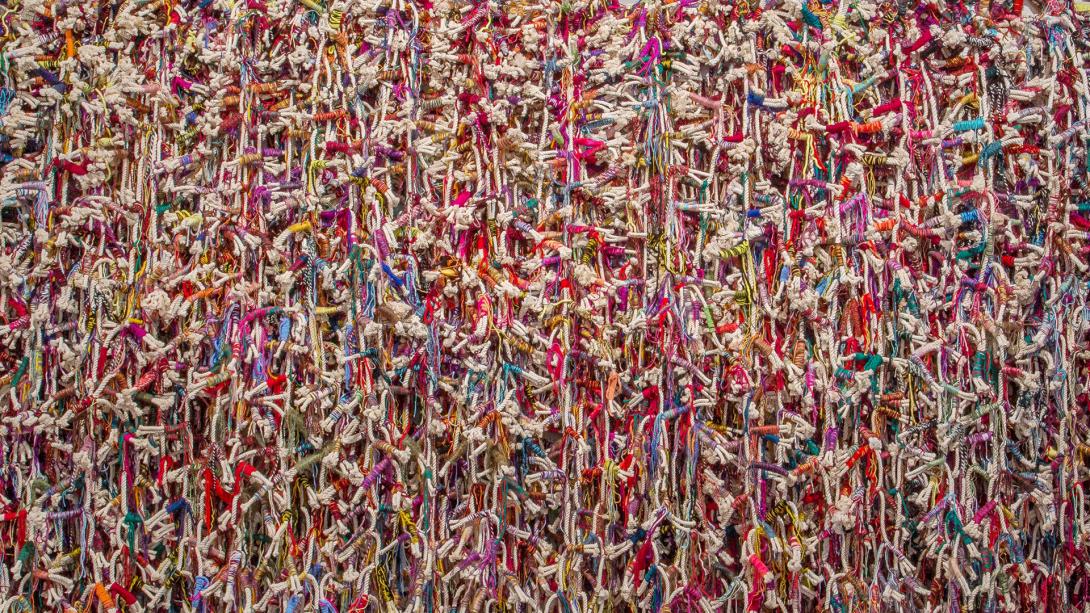Hassan Sharif
APT9
Born 1951 Bandar Lengeh, Iran
Died 2016 Dubai, United Arab Emirates
Lived and worked in Dubai, United Arab Emirates
Hassan Sharif is a seminal figure in the history of conceptual art in the Emirates. In addition to his own practice, he was responsible for introducing a generation of artists to conceptual and Fluxus practices, translating artist manifestos and art historical texts into Arabic. He also founded various avant-garde groups and organisations that presented an alternative mode of practice to the emerging ‘national style’. Sharif’s largest and most well-known body of work is his ‘objects’, imported or discarded materials tied together with wire or string. Incorporating Fluxus influences into the weaving, knotting, and threading of found objects, his practice also relates to the history of carpet making in the region. By folding and weaving objects together, Sharif’s piles mimic the sheer volume of available commodities, rendering them unusable and absurd.

Hassan Sharif / Iran/UAE 1951–2016 / Cutting and tying no.2 2014 / Cotton rope and wool / 275 x 650 x 50 cm / © Estate of Hassan Sharif / Image courtesy: Estate of Hassan Sharif; Gallery Isabelle van den Eynde, Dubai; Alexander Gray Associates, New York; gb agency, Paris
Hassan Sharif’s practice involved selecting and cutting or tying banal, everyday materials together to strip them of their original functions. In Cutting and tying no.2 2015, Sharif cut rope into small pieces ensuring that it could no longer tie or bind. In this work, the artist contrasts the flawless, factory-made object with the irregularity of the handmade. The trace of a human hand can be seen in the way the wool has been unevenly wrapped around the rope, while the machine-made nature of the rope is evident in the precise and even twists of its woven strands. Sharif created his artworks through a systematic yet simple set of actions that anyone could undertake, and his method reinforced his belief in a democratic approach to art.
Many of Sharif’s sculptures — or ‘objects’, as he called them — take the form of large mounds or ‘piles’ of mass-produced items. The ‘pile’ references the abundant goods seen on the ground and on tables in local marketplaces around the United Arab Emirates, where the artist purchased his materials. Sharif found the random arrangements of market goods a refreshing contrast to the ordered displays found in museums.
